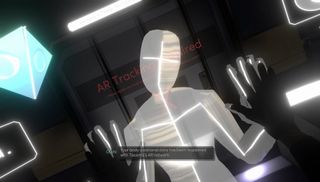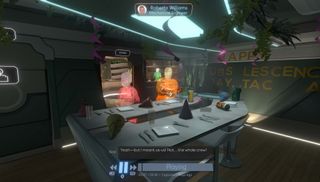Why Tacoma could prove to be an unforgettable adventure on Xbox and PC
The Xbox One and PC game Tacoma delivers its narrative in a remarkable way, and has the opportunity to provide an unrivaled adventure.

Tacoma made its public debut more than three years ago when it was showcased as a part of The Game Awards 2014. Coming straight off the back of the critically-acclaimed "Gone Home," the game's developer Fullbright found itself in the limelight with its brief teaser. Having gained a reputation for telling compelling narratives, Tacoma looked to be a promising successor to one the best story-driven indie games of the generation.
Although its premise was relatively vague, the short teaser showcased a unique style influenced by both art-deco design and modern space technologies. While it was easy to draw comparisons to the BioShock series through both its apparent style and themes, the game looked to offer a distinct experience through the promised narrative.
Following a lengthy silence since its announcement, Tacoma has undergone a significant visual overhaul based on tester feedback. This resulted in a major delay into 2017, in an attempt to rework the game in a new direction before its final release.
We managed to get our hands-on with Tacoma ahead of its launch later this year. Here's what we discovered during a ten-minute demo.

Early impressions of Tacoma
For those who know Tacoma from its initial reveal trailer, the game's recent change in artistic direction is hard to ignore. Swapping out its 1920s style in favor of a modern space-age design, the project has taken on a cleaner style that puts technology at the forefront of its world.
Assuming the role of Amy Ferrier, an AI communications specialist, players explore the seemingly abandoned Tacoma space station. Tasked with recovering AI data, our demo opened with Ferrier entering the facility and exploring the remnants left behind by its crew.
With an augmented reality system tracking the crew's every move, Tacoma delivers its story in a unique way, using holograms. Hooked up to the station's archive of augmented reality recordings, players encounter the echoes of the crew's previous actions, watching them unfold in real time. With no foresight into why the station was abandoned, players uncover Tacoma's secrets through the holographic trail left by its crew.
Get the Windows Central Newsletter
All the latest news, reviews, and guides for Windows and Xbox diehards.

Like the developer's previous work, Tacoma's unusual approach to storytelling appears to be a huge part of the game's appeal. Using augmented avatars that bear no emotion, the game's writing and voice acting play major roles in conveying a compelling narrative.
With each of the crew members distinguished by colored avatars, Tacoma makes its characters clear from the outset. Although our demo only gave a short preview of the crew's dynamic, early recordings already begin to capture the build-up of some captivating and memorable personas.
Tacoma's environments are also laced with details that progress the narrative, with objects and documents that continue to flush out the characters in this world. Strongly encouraging players to search through every environment, small rewards of additional narrative can be found in every nook and cranny.

Even with these characters animating the station, a feeling of loneliness can be found in Tacoma's environments. This could be laying the groundwork for an aspect of Tacoma's narrative, but the nature of the pre-recorded interactions immediately raises a barrier between the player and the crew. Even with the most compelling cast of characters, such an approach comes with heavy risks.
Future looks (Full)bright for Tacoma
Provided Fullbright can use this approach to its advantage, Tacoma plants some interesting concepts which could lead to an unforgettable experience. While this method of delivery may pose risks, the story it rides on will have a huge bearing on the game's success.
Tacoma is set for release later this year on both Xbox One and Windows PCs. Keep it locked to Windows Central for our full impressions of the game following that release.
Matt Brown was formerly a Windows Central's Senior Editor, Xbox & PC, at Future. Following over seven years of professional consumer technology and gaming coverage, he’s focused on the world of Microsoft's gaming efforts. You can follow him on Twitter @mattjbrown.

